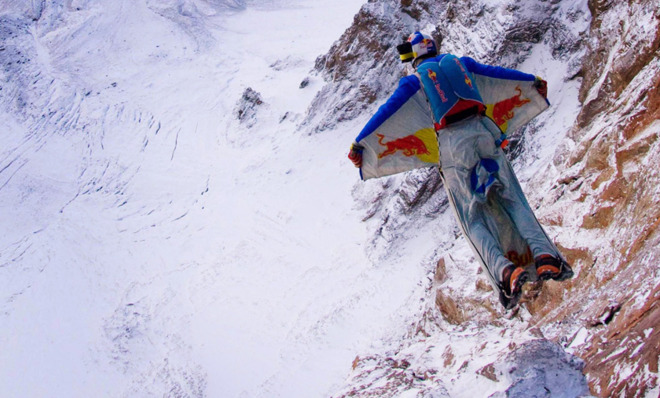The science behind B.A.S.E. jumping
Ever wonder how people can jump off skyscrapers and live to tell the tale? Here's the scientific answer.

Getting most people to stand on top of a multi-story building is a difficult task. But, encouraging them to jump off it is nearly impossible. That is, unless, they’re a B.A.S.E. jumper.
The activity recently was in the limelight when a few daredevils decided to take a late night, extremely illegal soiree off the top of One World Trade Center in New York.
B.A.S.E jumping refers to any activity where the person jumps from a fixed object. (In case you were wondering, B.A.S.E. stand for building, antenna, span, and Earth — four things you can jump off of.)
The Week
Escape your echo chamber. Get the facts behind the news, plus analysis from multiple perspectives.

Sign up for The Week's Free Newsletters
From our morning news briefing to a weekly Good News Newsletter, get the best of The Week delivered directly to your inbox.
From our morning news briefing to a weekly Good News Newsletter, get the best of The Week delivered directly to your inbox.
How does it work, you ask?
The jumpers use a parachute, wing suit, or a similar device to slow their fall so they don’t crack like an egg once they hit the ground. Wing suits, which make the wearer look like a flying squirrel, give the person more surface area to play with than just flapping their twig-like arms and legs. However, they’re not always necessary.
Nicholas Tsoupas, a physicist at the Brookhaven National laboratory and lecturer at Stony Brook University in N.Y., explained to The Week that the reason B.A.S.E. jumpers don’t go splat on the ground is because they use their devices like eagles use their wings when diving to snap up prey. The birds fold their wings to limit any wind drag on their way down, but pop them open right before they hit the water.
"[An eagle] reduces dramatically its falling speed and also directs its motion by moving its wings so it can catch the fish," Tsoupas said.
A free daily email with the biggest news stories of the day – and the best features from TheWeek.com
Parachutists and wing suit wearers employ the same principles. They keep the devices closed in order to stay more aerodynamic, but employ them once they need to slow down.
"As you see a wing suit when deployed properly generates air currents which provide lift instead of fall. This force reduces the force of gravity and make the fall slower," he explained.
Jumpers who wear wing suits also benefit from getting additional lift, similar to how an airplane works. But, they need that sharp fall to get that boost.
"To generate lifting power around the wings of an airplane, the plane must have speed," he said. "The same is true for the wings of the wing-suit bearer. It gets its speed from the initial fall towards the ground."
Tsoupas said the updrafts in the lower atmosphere help boost the flier up so they can soar in the air for a longer time. However, most wing suit wearers still need a small parachute to slow their descent to the ground.
Michelle Castillo is a freelance writer and editor and a pop culture junkie. Her work has appeared in TIME, the Los Angeles Times and CBS News.
-
 Ssh! UK libraries worth travelling for
Ssh! UK libraries worth travelling forThe Week Recommends From architectural delights to a ‘literary oasis’, these are some of the best libraries around the country
-
 A fentanyl vaccine may be on the horizon
A fentanyl vaccine may be on the horizonUnder the radar Taking a serious jab at the opioid epidemic
-
 The 8 best comedy TV series of 2025
The 8 best comedy TV series of 2025the week recommends From quarterlife crises to Hollywood satires, these were the funniest shows of 2025